Why Material Defines Cycling Sock Performance and Value
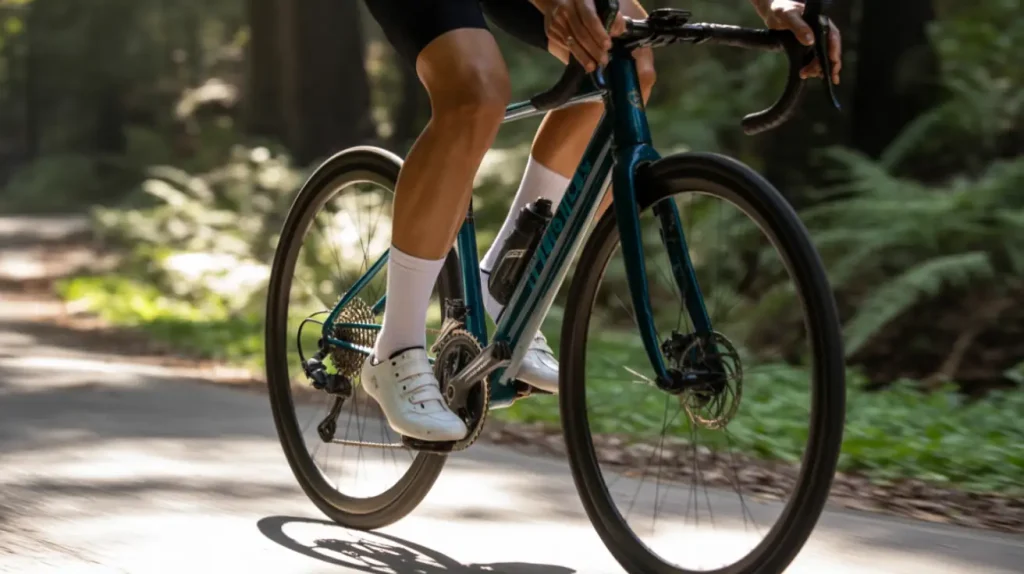
The performance of a cycling sock starts with its fabric. Material determines how the sock manages breathability, moisture, elasticity, and durability inside a cycling shoe. Unlike casual socks, cycling socks must perform under continuous friction and varying weather conditions, which makes fabric choice more important than design alone.
For brands and retailers, material is also a business decision. It influences production cost, retail price, and product positioning. A lightweight quick-dry fabric serves everyday commuters, while a premium fiber like merino wool appeals to riders who want advanced comfort in cold weather. Choosing the right material mix allows businesses to target different customer groups and create clear distinctions between entry-level, mid-range, and premium lines.
Material also shapes customer perception. When cyclists see nylon or polyester, they think of performance and durability. When they see merino wool, they think of warmth, natural comfort, and sustainability. Highlighting these material benefits in product descriptions and packaging helps retailers guide buyers toward the right choice and adds value to the brand story.
Nylon Blend Cycling Socks – Durability and Support

Nylon cycling socks are widely recognized for their durability and elasticity. Compared to other fibers, nylon offers superior abrasion resistance, making it ideal for riders who face long-distance endurance training or the tougher demands of mountain biking. The material holds its shape well under repeated stress, ensuring consistent fit and comfort across many rides.
Another advantage is affordability. Nylon blends are cost-effective to produce while still delivering professional-level performance. This balance between price and strength has made nylon the most popular choice for large-scale production, particularly in the mass-market and e-commerce channels.
Nylon is also colorfast, meaning it retains vibrancy even after repeated washing. For brands and retailers, this property makes nylon socks a strong option for customization, such as printing logos, team colors, or bold graphic designs without worrying about fading.
Key Benefits for Retail and Brands
- Long-lasting performance at low cost → ideal for bulk orders, promotional products, and entry- to mid-level product lines.
- Color retention → supports branded designs, club uniforms, and seasonal collections that rely on sharp, clear graphics.
- Versatile positioning → suitable for endurance riders, mountain cyclists, and general-purpose customers, giving retailers a broad target audience.
Polyester Blend Cycling Socks – Lightweight and Quick-Dry
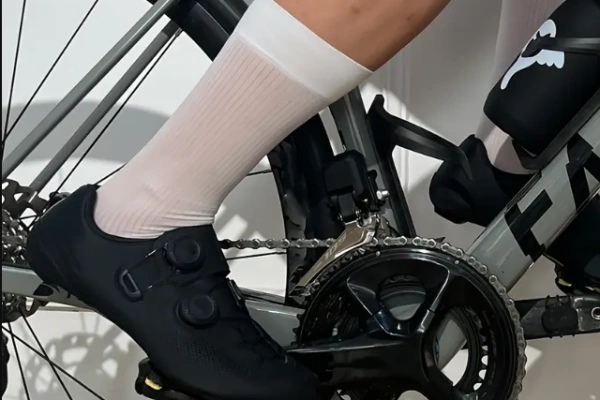
Polyester cycling socks are valued for being lightweight, fast-drying, and affordable. The cross‑section–engineered yarns (e.g., COOLMAX®) move sweat efficiently, helping riders stay cool and comfortable during summer rides, road cycling, and daily commutes.
Another key advantage is production efficiency. Polyester blends allow for short production cycles, which helps brands and wholesalers bring new designs to market quickly. This makes polyester socks a strong option for retailers aiming to refresh collections often or react to seasonal demand.
For consumers, polyester blends offer a balance of comfort and price, making them a natural choice for entry-level and mid-range products. For businesses, they provide reliable margins and scalable volume production.
Merino Wool Cycling Socks – Premium Warmth and Comfort
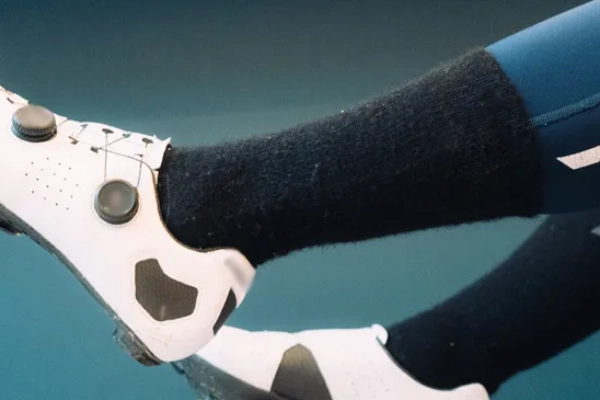
Merino wool cycling socks stand out as the premium option in the market. The natural fibers provide insulation without bulk, keeping feet warm in cold conditions while remaining breathable. They are also odor-resistant, which makes them ideal for long-distance rides and multi-day cycling trips. But actually, pure merino is less abrasion‑tough than synthetics; most cycling socks use merino/nylon/elastane blends.
For riders, merino blends often need nylon reinforcement for heels/toes in socks, which are the go-to choice for winter and endurance cycling, offering comfort and protection in challenging conditions.
For businesses, merino wool represents a high-end positioning. Boutique brands, cycling clubs, and specialty retailers often select merino for limited collections or premium lines, where storytelling and performance justify higher margins.
Why Retailers Choose Merino for Premium Lines
- Small-batch potential: suits brands targeting niche groups.
- High margins: premium pricing appeals to riders willing to invest in quality.
- Brand storytelling: natural materials align with sustainability and lifestyle marketing.
Material Choices for Brands and Retailers
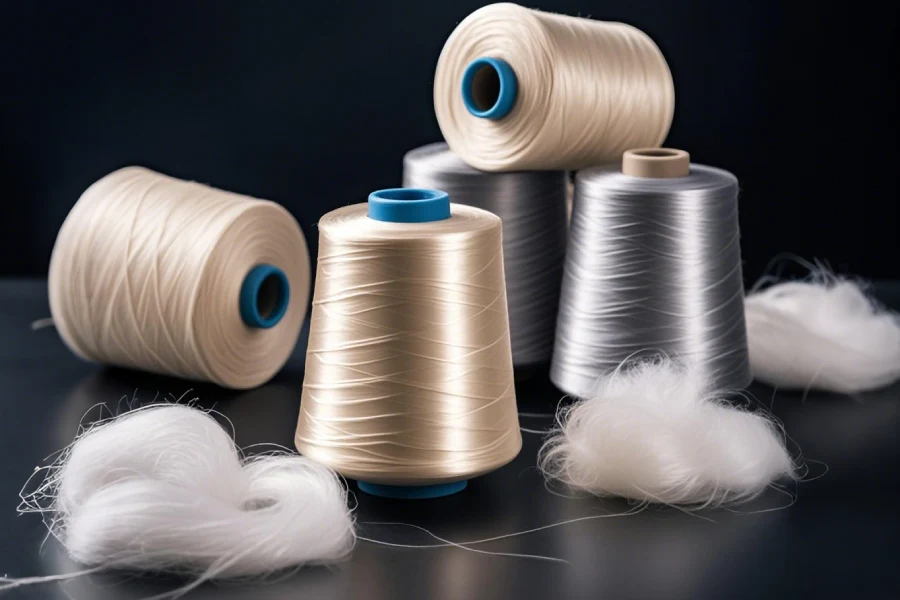
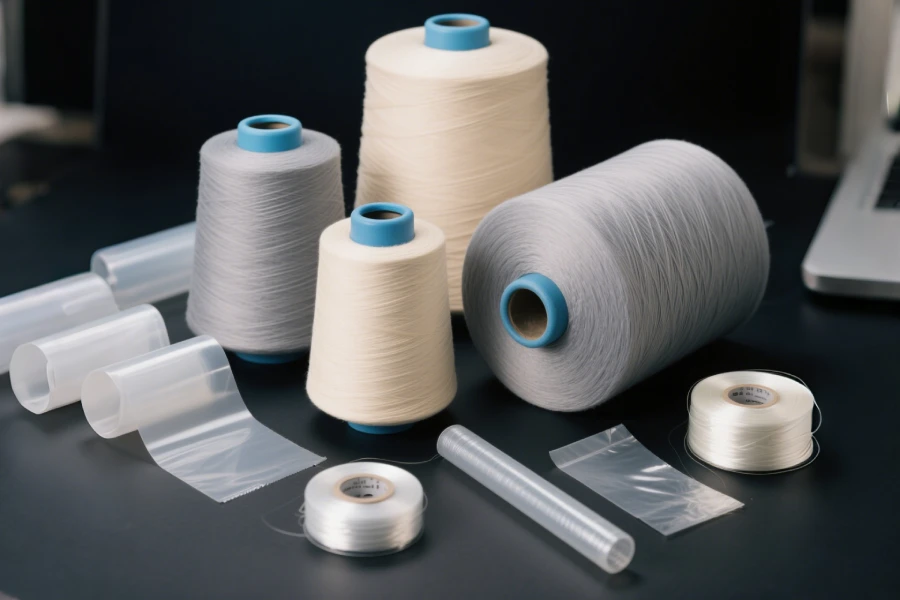

When developing a product line, cycling socks material is not just about function — it defines market positioning and customer reach.
- Tiered product strategy: Nylon blends suit entry-level, durable options; polyester fits mid-range, quick-dry needs; merino wool supports premium collections.
- Seasonal planning: Polyester for summer and road cycling, nylon for all-season versatility, merino wool for winter and cold-weather rides.
- Market segmentation: Combining materials allows brands to cover multiple price points and appeal to both casual riders and professionals.
For wholesalers and private label brands, selecting the right mix of materials helps build a balanced catalog that attracts a wider audience while keeping margins healthy.
Cycling Socks Construction That Matters (Regardless of the Material)
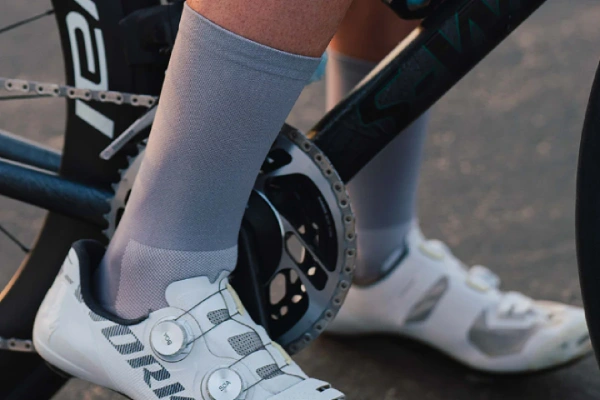
Plating (also called plaiting)
In performance socks, plating is a technique where two different yarns are knitted in parallel but positioned consistently—one always facing the inside, the other the outside. This allows designers to harness the best properties of each fiber in the zones where they matter most.
- For example, a nylon filament may be plated to the exterior to provide abrasion resistance and sharp graphics, while fine merino is plated to the interior for softness and moisture buffering against the skin.
- This dual-layer approach ensures durability without sacrificing comfort, which is critical for riders who log long hours or who ride in shoes with stiff, unforgiving uppers.
Seamless or linked toe closures
Traditional sock construction can leave a ridge or “knot” at the toe seam—exactly where cyclists apply repetitive pressure during pedaling. A linked toe closure creates a smooth, nearly invisible join, eliminating the ridge and reducing friction hot-spots that often lead to blisters or nail irritation.
- For high-cadence road riders or triathletes who cannot afford mid-ride discomfort, this detail can make the difference between finishing fresh or nursing painful toes.
Zoned meshes and terry mapping
Cycling socks increasingly use engineered zones rather than uniform knit.
- Mesh panels placed over the instep (top of the foot) allow sweat vapor to escape and enhance evaporation, especially when combined with ventilated cycling shoes.
- Low-pile terry loops under the ball of the foot and heel provide cushioning where pedaling forces concentrate, without creating bulk that would interfere with shoe fit.
Customization and Procurement Considerations
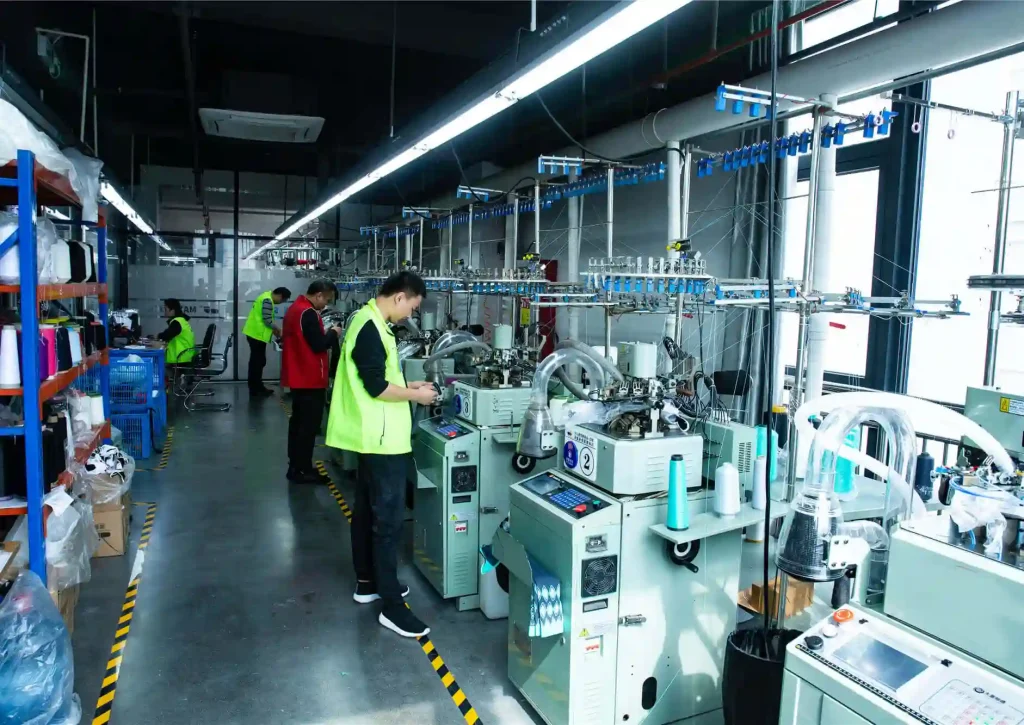
When sourcing from a custom cycling socks factory, material choice directly influences MOQ, cost, and delivery speed.
- Production impact: Nylon and polyester blends allow faster turnaround and larger batch efficiency, while merino requires longer lead times due to wool sourcing and knitting processes.
- Hybrid blends: Many brands choose nylon + polyester or polyester + merino to balance durability, breathability, and premium feel.
- Certifications: Using standards like the Responsible Wool Standard (RWS) adds credibility and supports eco-conscious marketing.
MOQ and Lead Time Differences
- Nylon / Polyester: Quick turnaround, suitable for bulk and promotional orders.
- Merino Wool: Smaller runs are possible, but with higher unit cost and extended production cycles.
For retailers, aligning material selection with procurement goals helps control cash flow, margins, and market timing.
FAQs
Are nylon, polyester, and merino wool cycling socks very different in cost?
Yes. Nylon and polyester blends are generally more affordable, suitable for bulk production and mass-market distribution. Merino wool socks have higher unit costs due to premium fibers, smaller batch production, and longer lead times.
Are merino wool socks too thick for cycling?
Not necessarily. High-quality merino wool socks are lightweight and breathable, designed to provide warmth without bulk, making them suitable for both winter rides and long-distance endurance cycling.
Why don’t professional teams use cotton cycling socks?
Cotton retains moisture, which can cause blisters and discomfort during long rides. Professional cyclists prefer nylon, polyester, or merino blends for their moisture-wicking, breathable, and performance-focused properties.
Can bulk orders include mixed material designs?
Yes. Factories often offer hybrid blends like nylon + polyester or polyester + merino. This allows brands to combine durability, quick-drying, and comfort features in one product line.
Which material works best for year-round cycling socks?
For all-season versatility, nylon blends are the most practical, offering durability, stretch, and moderate breathability. Polyester works well for summer, and merino is ideal for winter or cold-weather rides.
Conclusion
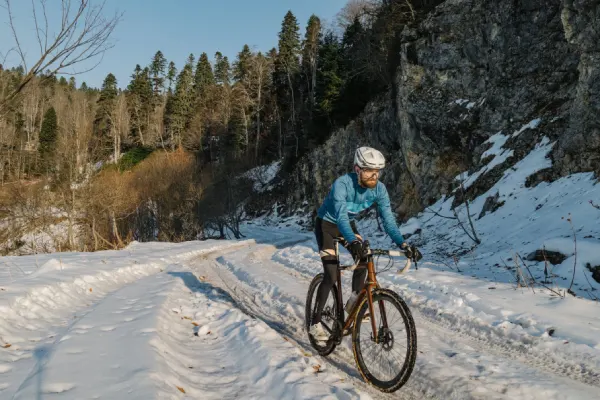
Choosing the right cycling socks material is key for both rider performance and brand positioning. Nylon blends deliver durability and color retention, polyester offers lightweight, quick-dry functionality, and merino wool provides premium warmth and comfort. By understanding these differences, brands, wholesalers, and retailers can strategically plan product tiers, seasonal lines, and target customer segments.
For businesses looking to expand or refresh their cycling sock offerings, partnering with a reliable custom cycling socks factory ensures high-quality production, flexible materials, and competitive lead times. Contact us today to discuss your wholesale or private label cycling sock needs and start your next collection with confidence.
